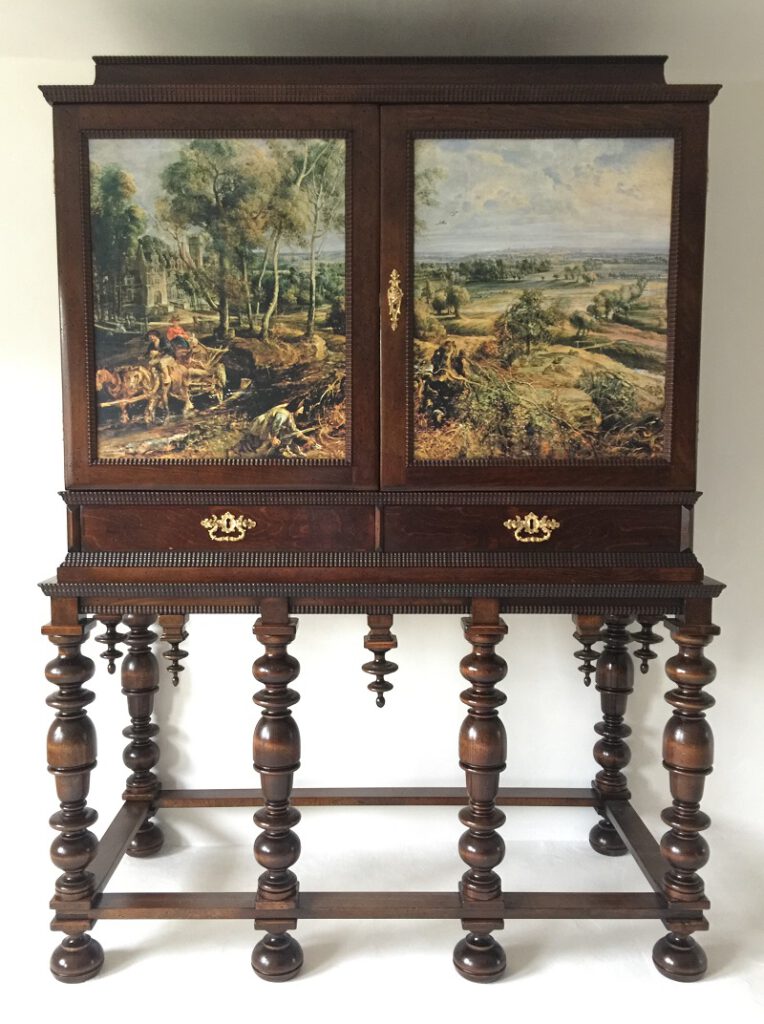Yes, it's true: This blog post really has nothing to do with the topic of "goldsmithing". But there is a historical type of furniture that has fascinated me in particular for many years and that is why I had the desire to create my own at some point Quote to make from it: The Flemish Cabinet.
Cabinets evolved from the early writing furniture and have been outgoing since the time of the Renaissance and the following one Baroque an integral part of, above all, courtly and bourgeois interior furnishings. In it were preferably the then so popular Kunstkammer-Objects such as rare jewellery, precious stones, cameos, coins, shells or other jewels that were particularly exotic at the time were kept and then occasionally presented to the astonished visitors of the house proudly and talking shop.
This piece of furniture was therefore primarily intended for representation and was therefore usually particularly splendidly furnished. That could next Marquetry made of rare and precious woods, marquetry There could also be elaborate paintings made of semi-precious stones or silver and tortoise shell, which adorned the outside of the cabinet, the doors inside and outside, and often even the drawer fronts inside such a cabinet.
The highlights were also perspectively designed, tiny "theater stages" with columns, mirrors and magnificent inlaid parquet, which, to the surprise of the astonished visitors, were hidden behind the small central inner middle doors. Here's a wonderful one Example from the Metropolitan Museum of Art in New York:
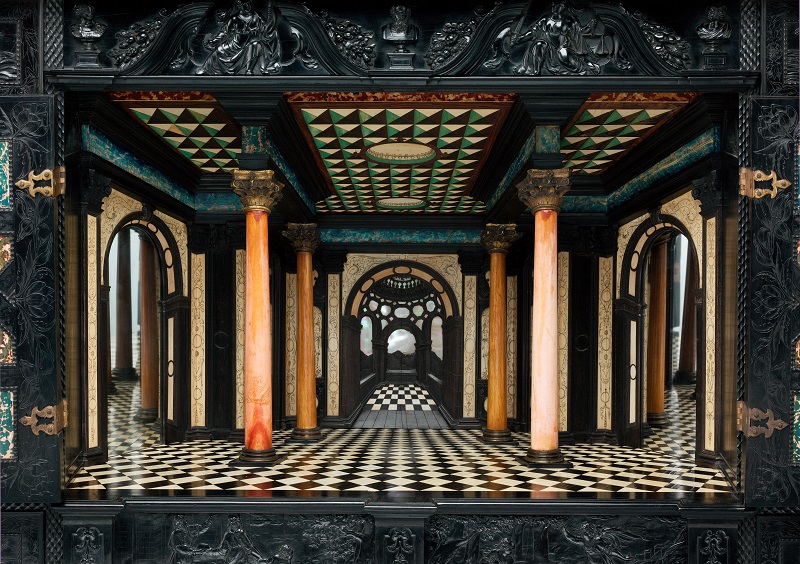
Flemish cabinets in particular were already known at the time for their excellent quality and were therefore very popular with wealthy customers and especially among the nobility throughout Europe. And just such an example with elaborate paintings and the typical of the time Flame strips or wave strips I was also particularly impressed. A Flemish cabinet with rich paintings and the typical substructure with turned feet and ornaments should serve as a model for my planned furniture replica.
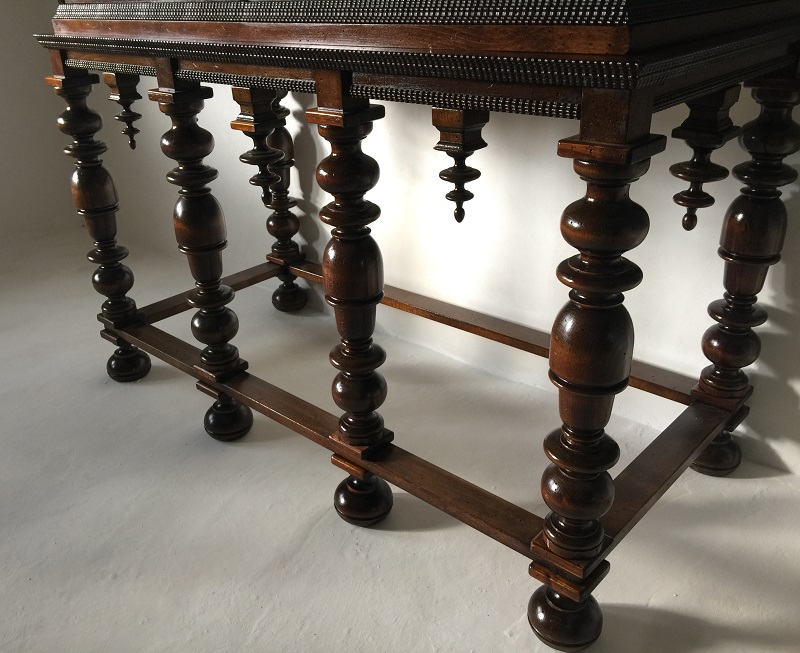
So I started almost two decades ago with the initial planning and the first procurement of materials for my replica. Unfortunately, there are only very few experts in the world who are still able, for example, to produce these beautiful and time-typical wavy strips (e.g. as painting borders) according to historical models in a convincing quality.
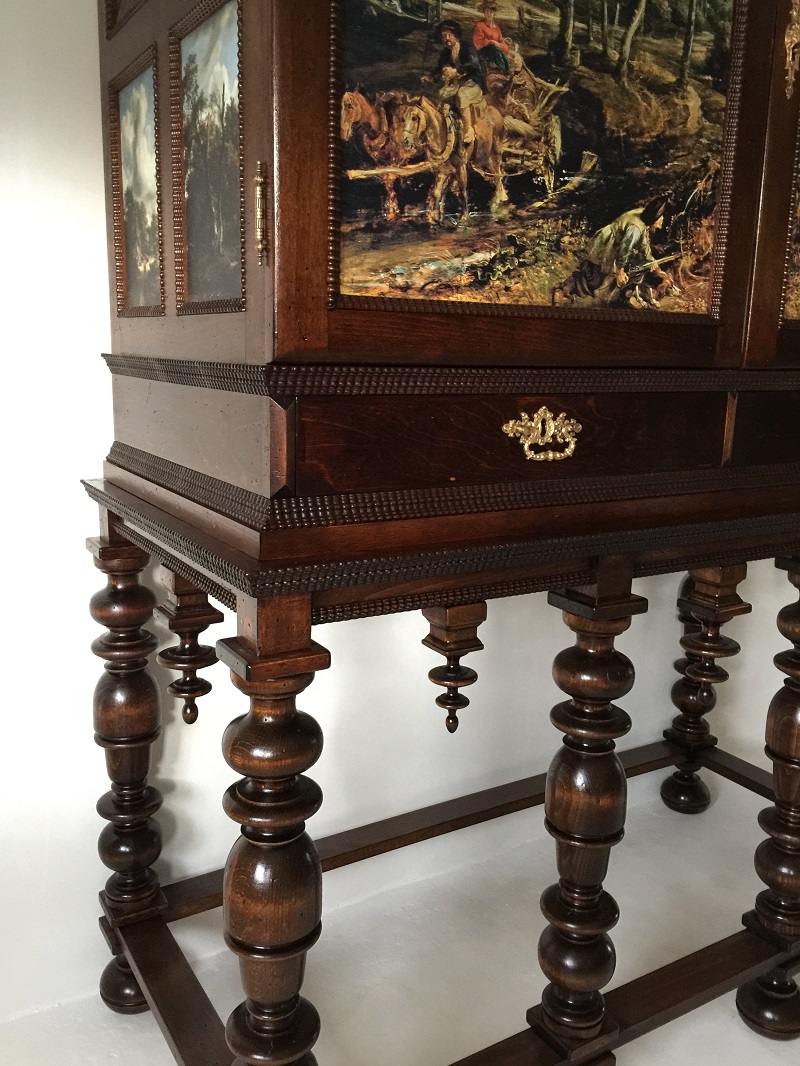
Originally, I even thought about reproducing the rich tortoiseshell trimmings in its filigree ivory edging on my cabinet. I had even found a supplier of celluloid tortoiseshell substitutes in the US and had samples sent to me from there. In the end, however, with a heavy heart I gave up these details and the elaborate gilding on the lower table, mainly due to lack of time. After all, I wanted to witness the completion myself. 😉
The final equipment with the true-to-original wavy strips, the feet, which were also turned to match, and the delicate tenons of the substructure, as well as my favorite baroque landscape paintings”An early morning view of Het Steen" from Peter paul rubens (for the two large front doors - Rubens had bought Het Steen Castle near Mechelen and lived there with his young wife Helen Fourment spent the last five years of his life) and four other pictures of Meindert Hobbema (for the outsiders) seemed to me to be more than sufficient for a satisfactory end result.
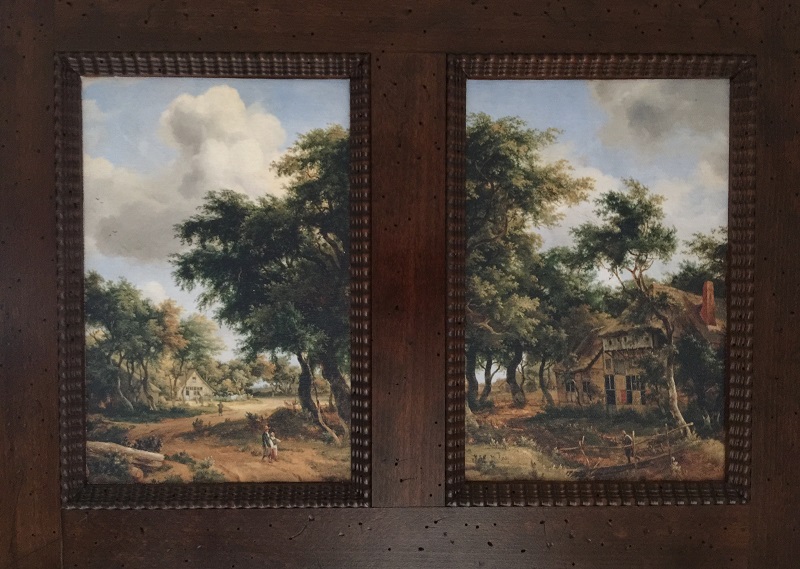
Many years ago, I had the distinctive table legs and the small decorative parts of the elaborate lower table specially made by an experienced master wood turner based on the historical model. I ordered the corrugated strips a short time later in Austria and Antwerp and even picked them up there personally. Rather by chance, I found a matching, all-round and perfectly grooved beech strip as a frame for the top "top compartment" of the cabinet. Recently, some smaller wooden trim parts even came from far away China. Incidentally, the painting replicas, which are securely fixed with special bookbinding glue, are high-quality art prints on real painting canvas with a strong final layer of varnish.
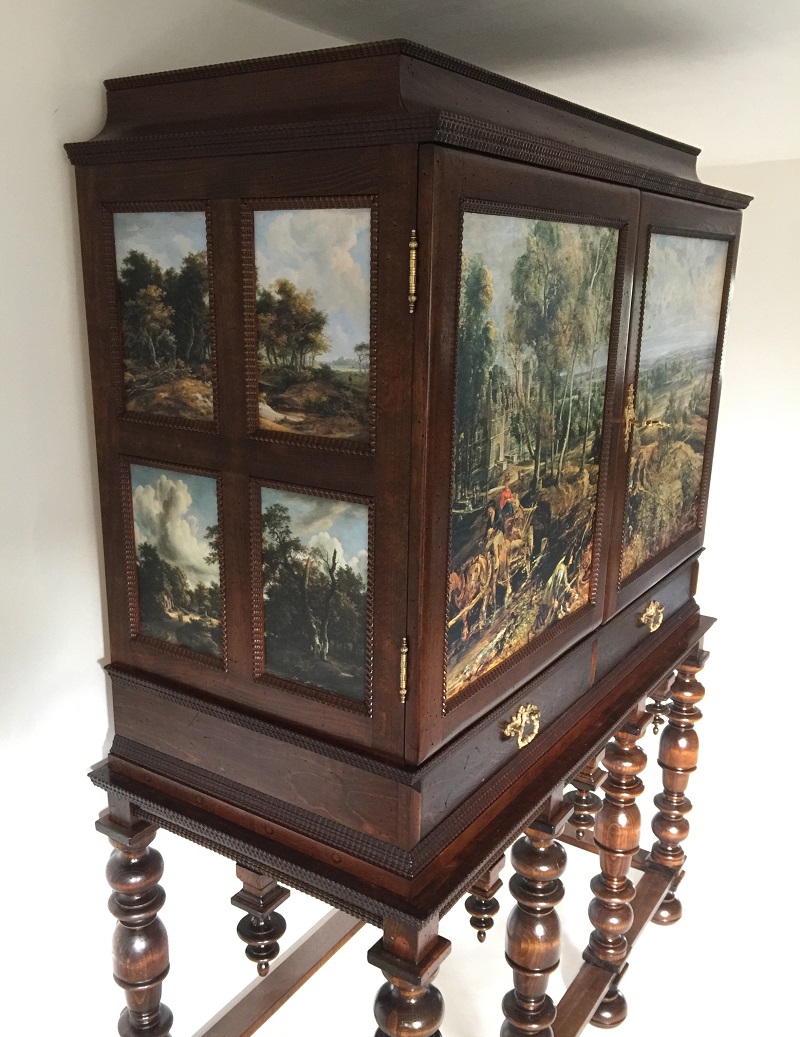
The finished "shell" of my cabinet was stained five times, provided with artificial signs of woodworm and wear for a convincing antique look, patinated with steel wool and then oiled and finally sealed with real shellac.
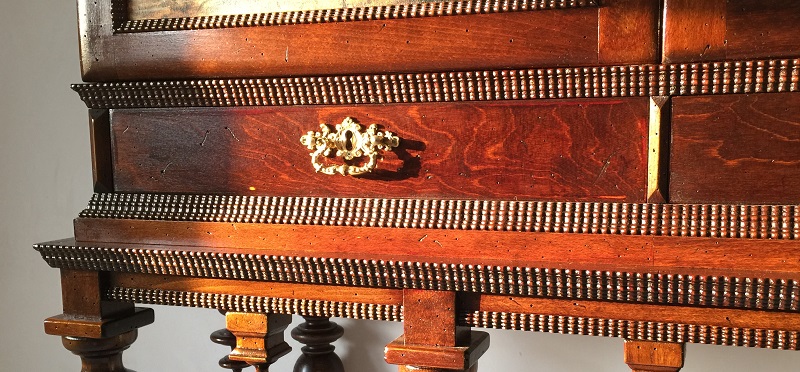
I found the right door hinges for my cabinet from a specialist supplier for hobby watchmakers, the gorgeous key plate with the lion mask comes from an online auction house. I got all the metal parts as a reward for all the effort in our goldsmith studio extra 24 carat real gold plated.
I'm very proud of the end result - quite immodestly. My self-made furniture replica is really something to be proud of. The months of effort and years of preparation were, in my opinion, royally rewarded in the end. And in the last evening sun he shows his full charm... 😉
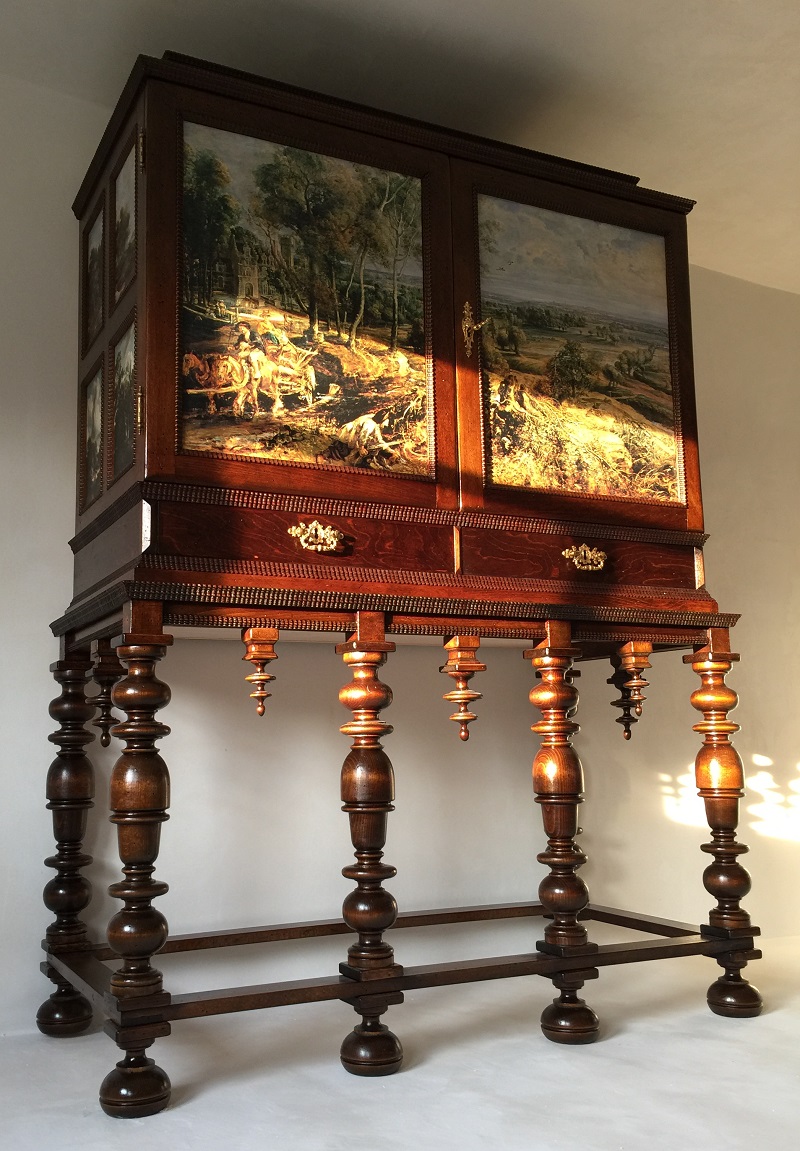
Oh yes ... and for everyone who is wondering what is hidden inside this cabinet: It is hidden next to two still lifes by Willem Claesz Heda on the inside of the front doors, I skilfully placed my TV set, which is now getting on in years, together with the audio system, including all the cable clutter, and even a small Blu-ray player in the top folding compartment.
It was probably quite different in the early Baroque...

